Excerpts from Jim Conrad's
Naturalist Newsletter
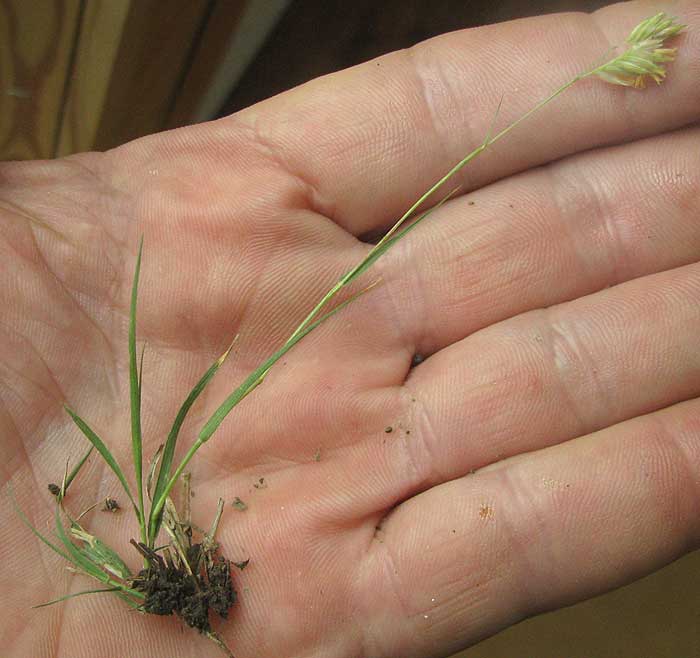
from the June 1, 2014 Newsletter issued from the Frio Canyon Nature Education Center in the valley of the Dry Frio River in northern Uvalde County, southwestern Texas, on the southern border of the Edwards Plateau; elevation ~1750m (~5750 ft); N29.62°, W99.86°; USA
BUFFALOGRASS
Along the road where deer and cattle keep the grass grazed so low that it looks like someone has been mowing, in a certain spot the short, green grass became speckled with pale objects, as shown below:
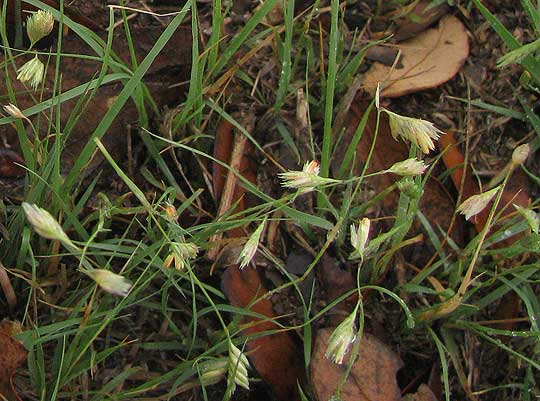
The pale items turned out to be spikelets produced by a tiny, low-growing grass, a whole plant of which is shown in my hand at the top of this page.
On this grass, flowering heads are arranged in a special way, with spikelets arising from just one side of each of the two secondary flowering-head-stems, or rachillas, as shown below:
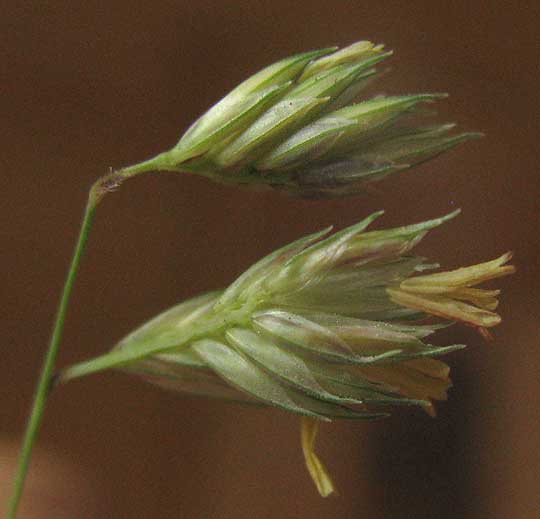
A close-up of individual spikelets shows that in our plants normally each spikelet contains two florets, as shown best in the spikelet at the top, right in the picture below:
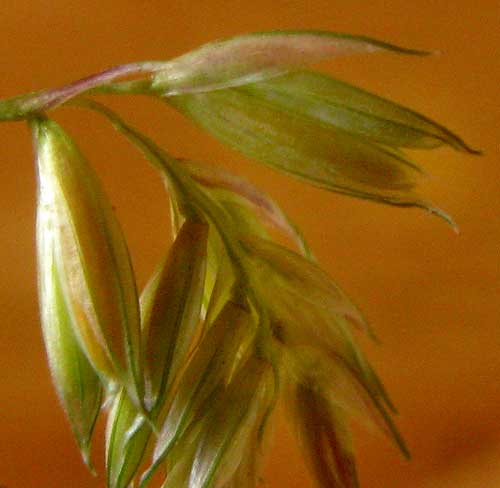
When we profile grasses, often we refer to glumes, which are special scales that typically are scoop-shaped and normally situated opposite one another at the base of a spikelet's collection of florets. The last picture nicely shows the two glumes inside which two florets are held. Each floret also is protected by two glume-like scales, but floret coverings, instead of being called glumes, are referred to as the lemma and palea. In the photo we can see that this species' lemmas bear three conspicuous veins or ribs.
Grass identification is largely a matter of noticing such details of spikelet arrangement and anatomy, but also of special importance is a vegetative feature, that of the "ligule," which may or may not exist where the leaf blade meets the stem. Ligules come in many sizes, shapes and textures, depending on the grass species. This dwarf grass' ligules are shown below:
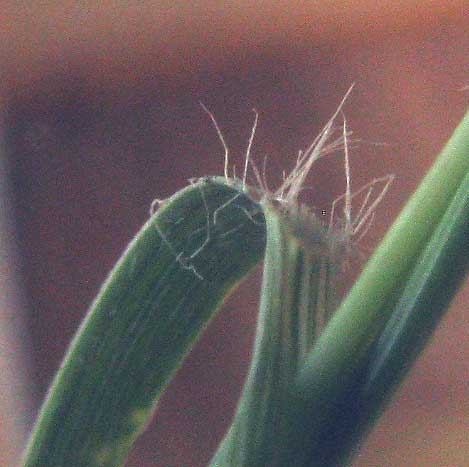
This grass' ligules are composed of very short ridge of stiff hairs, at the side of which much longer hairs arise.
The manner by which this grass' spikelets were attached to just one side of the rachillas reminded me of how it's done among the grama grasses, genus Bouteloua, so that's the first place I looked for this grass' identity. You might enjoy comparing our plant's general structure with that of the much larger Tall grama profiled at http://www.backyardnature.net/n/h/tallgram.htm.
Gramas are native prairie grasses, and maybe a dozen species might be found in our area. Our plants, much smaller that the others and with only two rachillas, soon keyed out to Buffalograss, BOUTELOUA DACTYLOIDES.
An interesting feature of Buffalograss is that the plants can be "dioecious,", with individual plants bearing flowers of only one sex, or "monoecious," with male and female flowers appearing on the same plant, and some plants might even bear flowers containing both functional male and female parts. I read that female flowers look very different from male ones, so I sought female flowers, but couldn't find any. All flowering heads of dozens of plants looked at were just like those in my photo.
Also I read that in the southern Great Plains Buffalograss can grow a foot high, which is much taller than any plant found here. Earlier, Buffalograss was a very important component of North America's short-grass prairie that stretched from southern Manitoba and Saskatchewan through the US central states into arid northern Mexico.
Our first picture shows Buffalograss growing like lawn turf. Buffalograss also is famously drought tolerant. These features haven't escaped the notice of horticulturists, who have created numerous cultivars from the species meant to serve as lawn grass . Among the best known turfgrass cultivars developed from Buffalograss are Prairie, Stampede, 609, and Density. Other cultivars intended for livestock forage include Comanche and Texoka. Researchers at the University of California Riverside and University of California Davis have hybridized a buffalograss cultivar, UC Verde, which creates a thick, green, drought-tolerant lawn for California's hot, dry summers.
I rarely see Buffalograss here, but when I do I'm pleased, for in the history of North America, the species has served magnificently, photosynthesizing endless carbohydrate for herbivores and holding prairie soil in place during untold numbers of floods and windstorms.